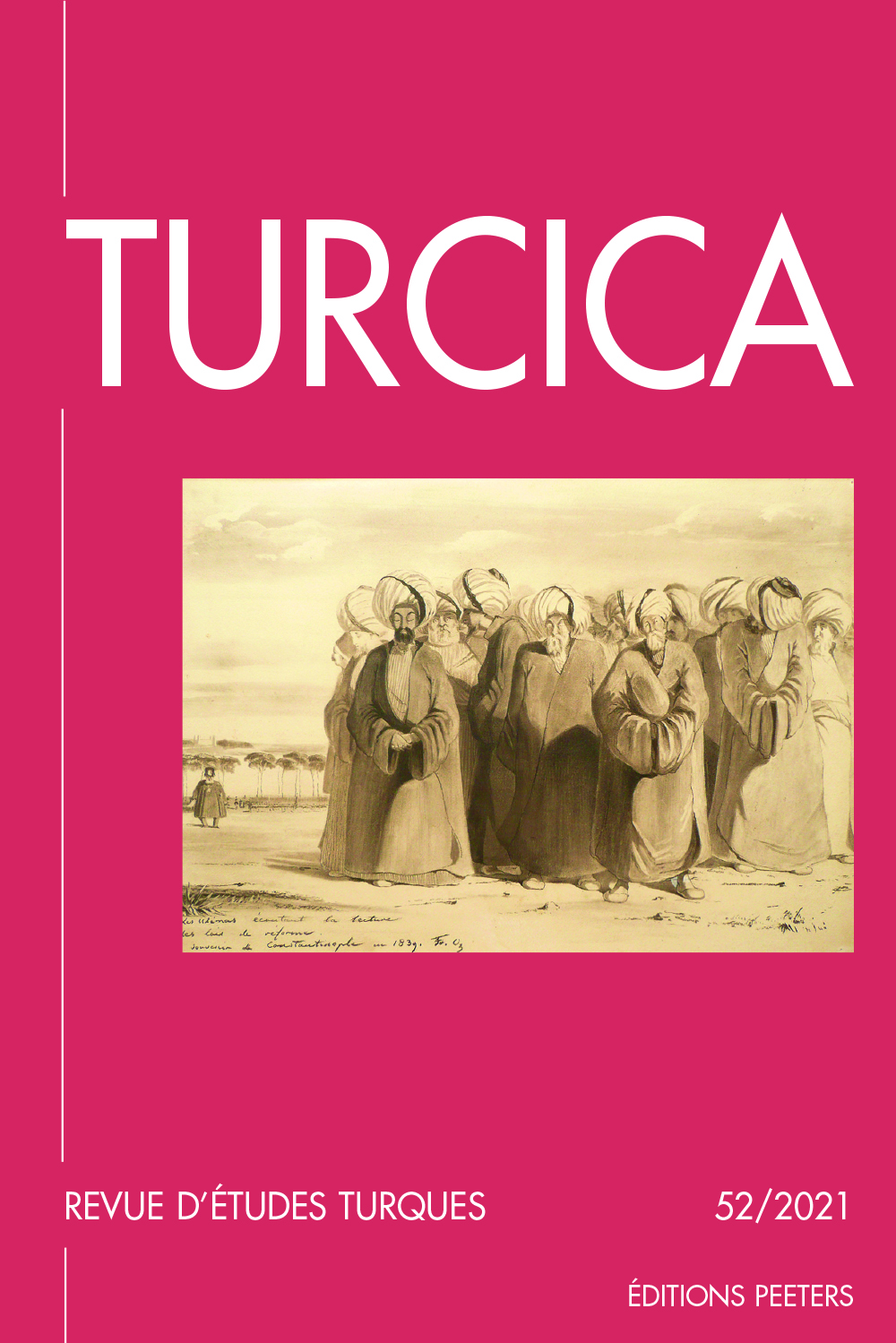 previous article in this issue previous article in this issue | next article in this issue  |

Preview first page |
Document Details : Title: The 'Fu-Yu Gïrgïz' and their Past Subtitle: Three Stories Collected in Manchuria During the Period of The Establishment of the People's Republic of China Author(s): TURDU, Mambet , SALK, Gundula Journal: Turcica Volume: 30 Date: 1998 Pages: 287-296 DOI: 10.2143/TURC.30.0.2004303 Abstract : Mambet TURDU and Gundula SALK, The “Fu-Yu Gïrgïz” and their Past. Three Stories Collected in Manchuria during the Period of the Establishment of the People's Republic of China The establishment of the people’s governement in China during the early 1950s had several affinities to the steps undertaken in Soviet Union of the early 1920s. One of them meant the demographic study of China’s non-Han minority population by considering their ethnic particularities and their historical origin. It was in this context that Heilongjiang’s investigation team had “discovered” the tiny ethnic group of Gïrgïzin the county of Fu-Yu. In order to describe the ethnic frame of that community, the team relied on linguistic facts, on the self-designation Gïrgïzand on the oral traditions. The members of that community were, at that time, already bilingual (“Gïrgïz-Turkic” and “Öelet-Mongolic”) for a long time, probably as a result of their ethnic history after they had joined the Oiratconfederation. They had, like other South Siberian Turks, viewed their ethnic identity apart but understood the Mongolic Öelet as the leading component of the Dzungarian Empire. The stories reported by the Gïrgïz linguistic community show that they had placed themselves under the control of the Western Mongols and refer to two names of the last Dzungarian chiefs: Dawaqi and Amursana. Hence, we can’t doubt that the Gïrgïz, linguistically of a South Siberian Turkic origin, have been forced to move to Manchuria as a result of the Dzungarian defeat (1755-1761) together with those Öelet who inhabite Manchuria today. It remains open, however, where and when they adopted their Gïrgïz ethnonym. Mambet TURDU and Gundula SALK, Les “?Fu-Yu Gïrgïz?” et leur passé. Trois histoires recueillies en Mandchourie au cours de la période de la fondation de la République populaire de Chine Les mesures prises pour instituer le gouvernement du peuple en Chine, au début des années cinquante, ressemblent beaucoup à celles de l’Union Soviétique au début des années vingt. L’une d’entre elles est l’étude démographique de la population non-Han de la Chine concernant les particularités ethniques et l’origine historique. C’est ainsi que le groupe de recherche en Heilongjiang a “découvert” le groupe ethnique minuscule des Gïrgïz autour de Fu-Yu. Afin de définir ethniquement cette communauté, le groupe de recherche s’est appuyé sur des traits linguistiques, sur leur propre désignation sous l’appellation de Gïrgïz et sur leurs traditions orales. Les membres de cette communauté étaient bilingues (turc-“Gïrgïz" de Sibérie méridionale et mongol occidental des “Öelet”). Comme d’autres Turcs de Sibérie méridionale, ils se reconnaissaient une identité ethnique à part, mais admettaient que les Öelet mongols soient dominants dans l’Empire Dzoungar. Les histoires racontées par la communauté linguistique des Gïrgïz montrent qu’ils avaient accepté volontairement le pouvoir des Mongols occidentaux et rapportent deux noms des derniers chefs dzoungars: Dawaqi et Amursana. Il n’y a donc aucun doute que les Gïrgïz, linguistiquement d’une origine turque de Sibérie méridionale, ont été forcés d’émigrer en Mandchourie à la suite de la défaite des Dzoungars (1755-1761), alliés aux Öelet qui vivent aujourd’hui encore en Mandchourie. Pourtant, nous ne sommes pas en mesure de répondre à la question: d’où vient leur ethnonyme de Gïrgïz et depuis quelle date l’utilisent-ils? |
 |


